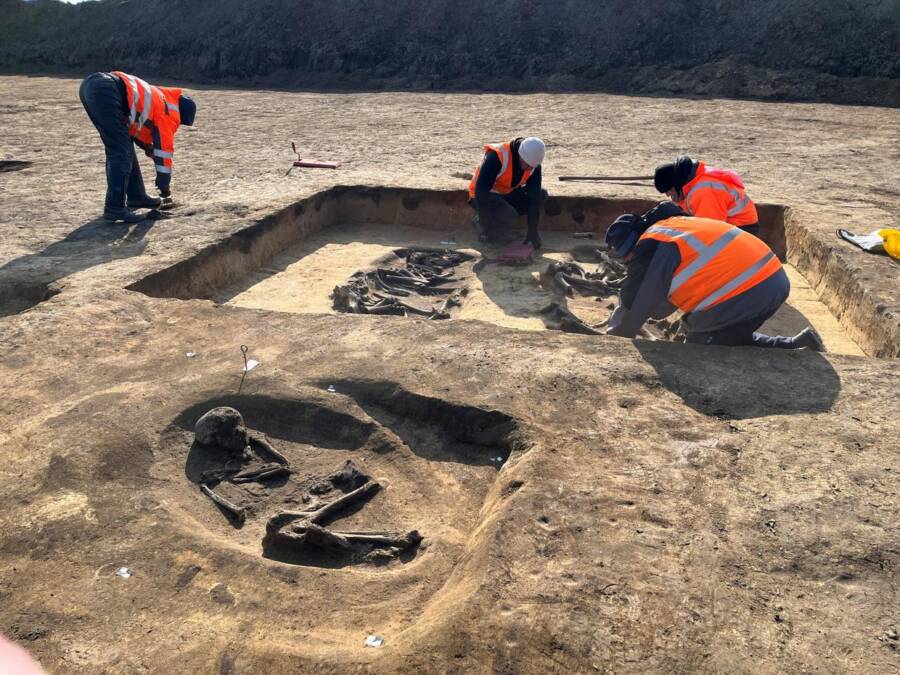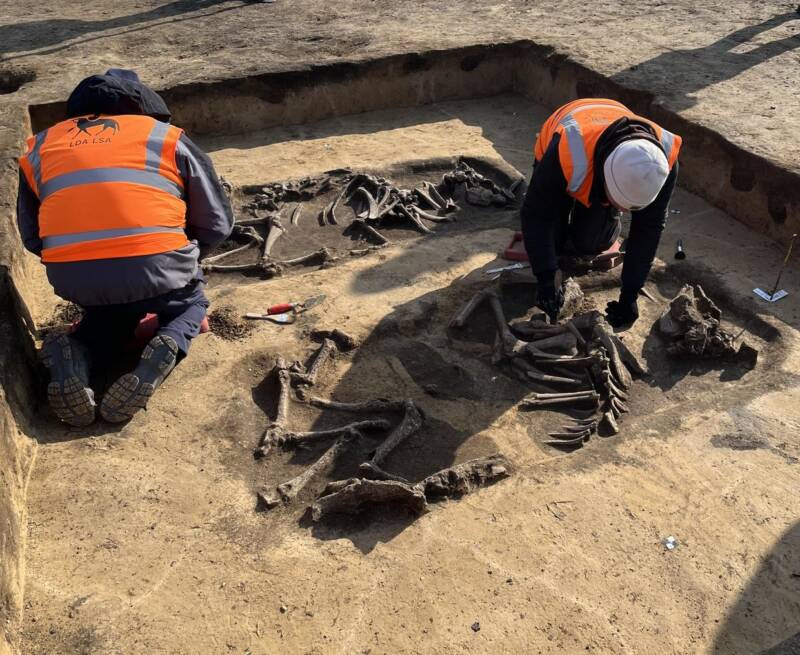
State Office for Heritage Management and Archaeology Saxony-AnhaltArchaeologists at work at the site, which is thousands of years old and includes signs of ritual sacrifice.
While excavating the future site of an Intel plant in Germany, archaeologists found a piece of the past. There, under a small hill about 100 miles west of Berlin, they uncovered a complex Neolithic burial ground.
The site is around 6,000 years old, and it tells a fascinating tale about ancient people — including how they utilized sacrifice in their burial rituals.
Discovering The Burial Mounds In Magdeburg
In 2023, archaeologists from the State Office for Heritage Management and Archaeology Saxony-Anhalt began to examine a site in Magdeburg, Germany, where Intel planned to build a new chip factory. While doing so, they realized that a small hill in the area contained two “monumental” burial mounds.
The 6,000-year-old burial mounds, located about 650 feet apart, dated to the Neolithic period. They covered burial chambers made of wood which contained “several burials” apiece, according to a news release from the State Office for Heritage Management and Archaeology Saxony-Anhalt. The two burial mounds were separated by a long corridor that was probably used as a processional route 1,000 years after they were constructed.

State Office for Heritage Management and Archaeology Saxony-AnhaltArchaeologists called the site in Magdeburg “astonishing.”
Archaeologists believe that the burial mounds were constructed by the Baalberg people, who lived in Germany between 4100 and 3600 B.C.E.
“The area currently examined turned out to be a highly complex, long-used burial and ritual landscape,” the state heritage office explained.
This “astonishing” site contained a wealth of information about ancient people in Germany, including how they used sacrifice in their burial rituals.
Sacrificial Burial Rituals In Magdeburg
Of all the discoveries made in Magdeburg, one certainly stood out: cattle that were apparently sacrificed and buried along the processional route.
As the news release explains, archaeologists found pairs of young cattle, probably between the ages of two and three, that had been sacrificed and buried along the route. Fascinatingly, they also discovered the grave of a man who was between 35 and 40 when he died buried alongside a chariot in front of the cattle to create “the image of a cart with a driver or a plow pulled by cattle.”

State Office for Heritage Management and Archaeology Saxony-AnhaltAn aerial view of the burial site in Magdeburg.
Such an “orchestration,” the news release explained, has previously been observed in “other older and contemporary burials.” Burials with cattle are meant to symbolize “that with the cattle the most important possession, the security of one’s own livelihood, was offered to the gods.”
Archaeologists also found that a ditch was built along the path of the processional route about 1,000 years later. It seems to have “deliberately included” the larger of the two burial mounds at the site and “passed over the cattle burials but did not destroy them.”
As such, the site appears to have been an important one for ancient people for thousands of years. Archaeologists will continue their excavations until April and will hopefully come across even more intriguing discoveries from the Neolithic age — and beyond. Already, they’ve also uncovered burial mounds from the Corded Ware people (who lived in Germany around 2800-2050 B.C.E.) about 2,000 feet away.
“The consistency in the ritual use… is astonishing,” the state heritage office noted in their news release. “[A]nd the subsequent analysis of the finds promises even more interesting insights.”
After reading about the Neolithic burial mounds found in Germany during the construction of an Intel factory, learn about nine of the world’s oldest structures and the fascinating stories behind their constructions. Or, read about the “Lovers of Valdaro,” a pair of Neolithic skeletons who appear to be wrapped in an eternal embrace.